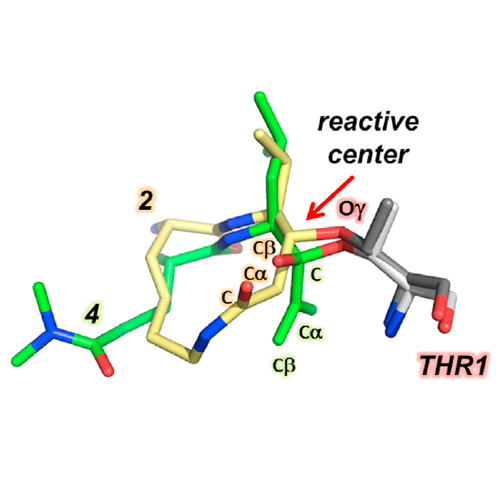Enzyme Inhibition by Hydroamination: Design and Mechanism of a Hybrid Carmaphycin-Syringolin Enone Proteasome Inhibitor
19-Jun-2014
Chemistry & Biology, 2014, DOI: http://dx.doi.org/10.1016/j.chembiol.2014.04.010, Volume 21, Issue 6, p782–791, published on 19.06.2014
Chemistry & Biology, online article
Chemistry & Biology, online article
Hydroamination reactions involving the addition of an amine to an inactivated alkene are entropically prohibited and require strong chemical catalysts. While this synthetic process is efficient at generating substituted amines, there is no equivalent in small molecule-mediated enzyme inhibition. We report an unusual mechanism of proteasome inhibition that involves a hydroamination reaction of alkene derivatives of the epoxyketone natural product carmaphycin. We show that the carmaphycin enone first forms a hemiketal intermediate with the catalytic Thr1 residue of the proteasome before cyclization by an unanticipated intramolecular alkene hydroamination reaction, resulting in a stable six-membered morpholine ring. The carmaphycin enone electrophile, which does not undergo a 1,4-Michael addition as previously observed with vinyl sulfone and α,β-unsaturated amide-based inhibitors, is partially reversible and gives insight into the design of proteasome inhibitors for cancer chemotherapy.











